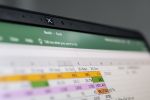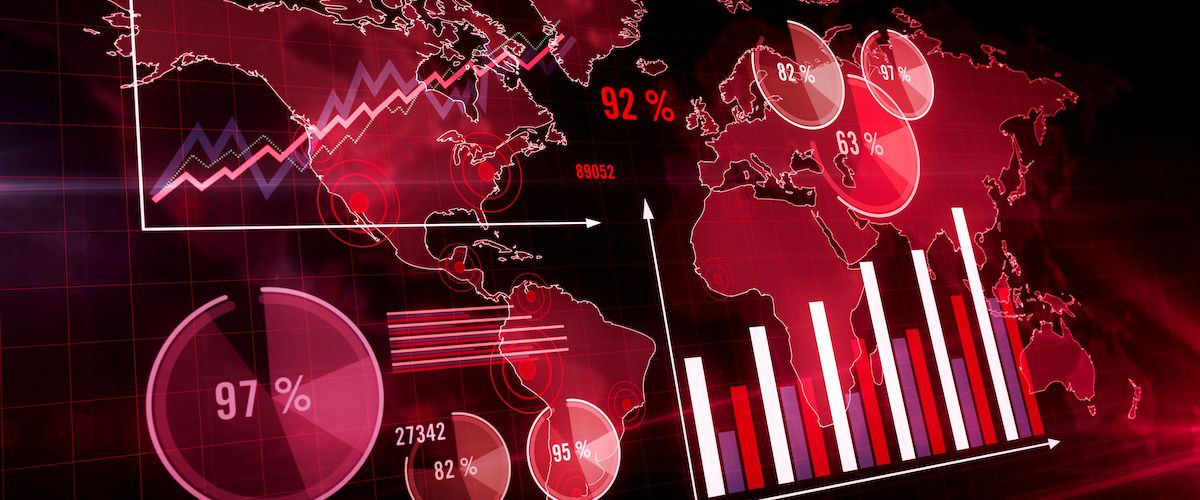Data visualisation: meaning behind the numbers
The evolution of technology is a boon for data visualisation. As new techniques become more sophisticated, it becomes easier to visualise data in an even more visual and understandable way. Big Data is a giant pool full of opportunities.
The power of data visualisation
The role of data visualisation is about improving the understandability of information. Since it's been proven that humans are more efficient at absorbing visual information, it's no wonder that it's easier to interpret data when we can see it.
In the age of Big Data, the visualisation of data is almost a must. Every day, an enormous amount of data is created, that in a raw format means nothing to the recipient. Instead of statistics, we need stories, which data visualisation can provide. It allows us to see the consumers behind the numbers and decrease the noise behind the 0s and 1s.
For stories to emerge, a healthy balance of form and content must be found. It is safe to say that this is the true art of our century. If the presentation is too simple, it doesn't grab attention, but if it's too overloaded, it's easy to lose the point and the message is not clearly understood.
Regardless of the industry, data visualisation can bring fruitful results. This toolkit combines the characteristics of creative storytelling and analysis in a form that can be easily interpreted and understood.
Endless list of benefits
Visuality is a common language that allows business decision-makers to find common ground worldwide. Visualisation can help to uncover correlations that are not obvious from raw data. Furthermore, by analysing historical data and results, predictions can be made, and trends can be identified.
Time is a crucial factor that most analytical and visualisation tools cannot deal with. By integrating the time dimension, huge market benefits can be gained.
Data visualisation toolbox
The range of visualisation methods is very wide. Everyone is familiar with the good old bar chart, which has stolen the hearts of the public with its simplicity, or the pie chart, which everyone has memorised from primary school. These are also part of the toolbox of data visualisation, but with huge limitations.
Data visualisation can take the form of charts, tables, maps, graphs and infographics. Let’s look at some of them!
- Diagram: a classic form of visualisation that is easy for most people to read. It is suitable for displaying trends, and variations over time
- Table: tables are part of everyday life and are a simple way to visualise Big Data. The more complex a table must be, the more difficult it is to capture and understand.
- Map: maps show the location of data compared to other elements. The most common use of maps is in the field of geography, but it is common in other fields too.
- Graph: a graph is best used to show the relationship between two quantities.
- Infographics: as the name suggests, infographics are a way of conveying information in a graphical form. It is an informative illustration composed of text, drawings, pictures and diagrams.
In addition to the broad category above, some typical ways of presentation are worth mentioning:
- Scatter diagram: a scatter diagram or a point cloud diagram reveals the relationship between two variables, and whether there is a dependence between them. It also shows the spread, the distribution pattern and the outliers.
- Gantt chart: It is used to represent activities and tasks. It aims to arrange them over time so that you can see what is happening when in the organisation.
- Heatmap: a heatmap uses different colours to show the distribution of data, for example, in the case of a website, which parts of the site are most interesting to visitors, and where they spend the most time.
- Histogram: a histogram is nothing more than a plot of metrically scaled properties using adjacent columns.
- Matrix: matrices are tables that are broken down into rows and columns of numbers.
- Timeline: a timeline shows the chronological order and succession of past and future events.
- Word cloud: an illustration of related words, with more common words in larger letters and less common words in smaller letters.
- Treemap: a hierarchical representation of data to help recognise patterns.
Where is data visualisation used?
The wide range of tools available for data visualisation can be used in a variety of situations and fields. We have collected some typical applications!
Scientific work
Visualisation plays an important role in making research results visible and understandable. This field has a special name, SciVi. It allows scientists to communicate the essence of research and its importance much more effectively.
Trading and marketing
Ideally, the field of trade and marketing is data-driven. Tracking user behaviour generates data, which is best handled using data visualisation tools. So, at first glance, you can see what is worth focusing on and what is not.
Finance
Most economic indicators are easier and better understood if they are represented visually. It is no coincidence that all financial reports abound in charts and graphs to aid understanding.
Architecture
Architecture is another area where data visualisation techniques are used. The best-known example is the heat transfer coefficient of a building shown on a heat map.
Logistics
An effective way to identify different transport routes is to use data visualisation tools in battle.
At Bixpert, we believe that putting data to work supports the development of a company. Curious about how we work and achieve results with MicroStrategy, Exasol, Jedox and Visual Crossing? Click to learn more about Bixpert!


Jedox instead of Excel: switch to a higher gear


Budget planning: juggling with the numbers
© 2020 Bixpert. All Rights Reserved.



















